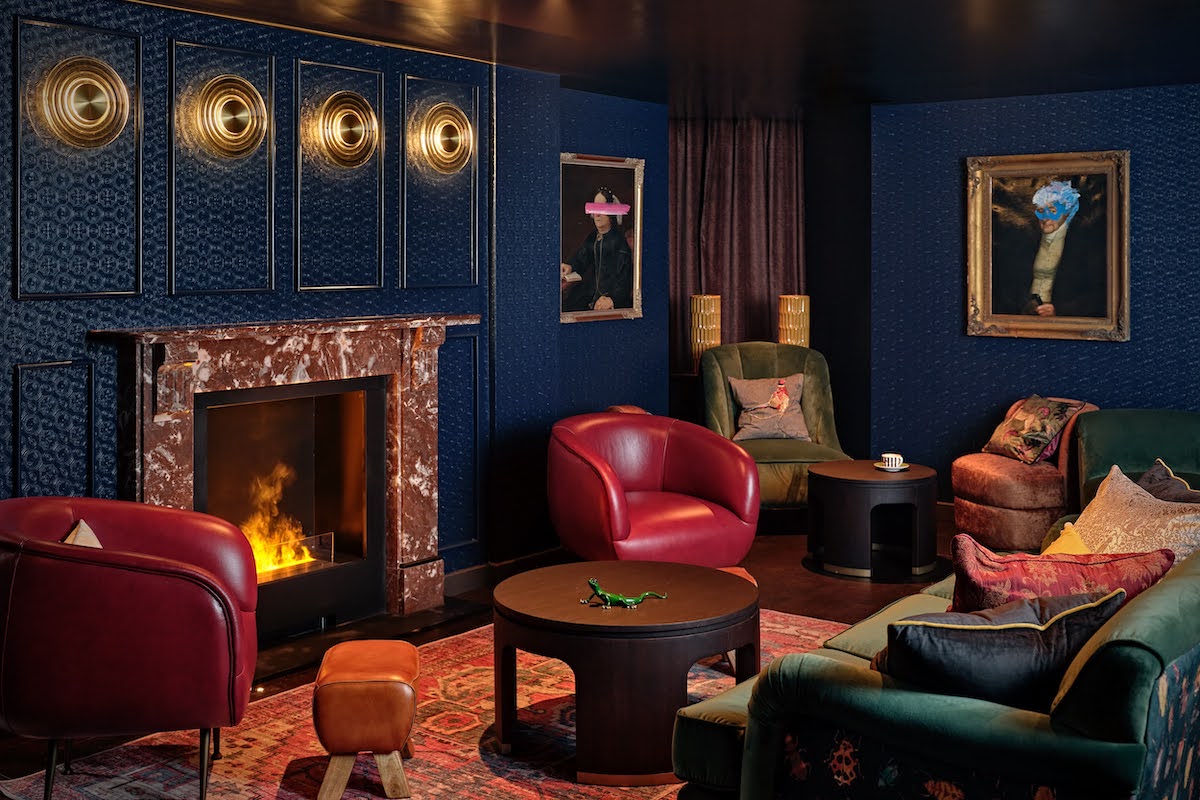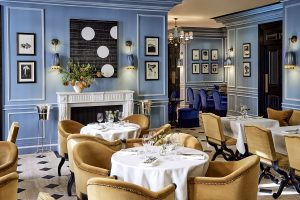
members only – exclusivity or community? • Hotel Designs
As the conversation in the hospitality trade becomes increasingly louder about making connections, community and creativity, the concept behind a members’ club has taken on new dimensions as hotels seek out paths that can set them aside. Naturally, this was a hot topic at HIX, the experience-led trade show that this year sheltered discussions that went further than any other conference seminar programme.
The conversation around hotel members’ clubs on the HIX Talks stage started at the beginning, at the point of concept and creativity, with Hamish Kilburn, Editor, Hotel Designs, asking the panel to expand on the factors that pushed them to launch, or, in some cases pivot, the hotel experience to include a space for private members.
On the panel were:
- Naomi Heaton, CEO, Founder, Co-Owner, The Other House
- Natalia Miyar, Founder, Natalia Miyar Atelier
- Myriel Walter, Global Director of Culture & Membership, Sircle Collection
- Chris King, Co-founder, Birch
What was clear throughout the discussion was the a sense of community, at the heart of all members’ clubs, mixed with the need to identify and then facilitate the growth of authentic, organic communities. Developing an understanding of what a members’ club can do for a hotel experience is as important as having a very clear understanding of what members want and expect from the club.

Image credit: The Other House
Referencing The Other House in particular, designed by Bergman Design House with architecture by Falconer Chester Hall, Heaton addressed the process of creating and launching a new members club. “We approached The Other House through a residential lens rather than a conventional hotel perspective,” she said. “The brand will be a ‘second home’ for its guests – their other house – and they can live like a resident, for as long as they are in town. Our aim was to create a second home for our residents for as long as they were in town – quite simply to be their other house. It was just a short step from there to arrive at the The Other House!”

Image credit: The Twenty Two
Picking up the designer baton, Natalia Miyar took a closer look at what it means to deliver a design-driven members’ club, understanding the importance once again of knowing your target community in order to really define the design expectations in an area reserved for members only. Is the space merely an extension of the hotel, separate but equal, or is a strong differential required? In the case of The Twenty Two, the design of the members’ club interacts with the hotel as a whole. Key to integrating and layering spaces is, according to Miyar, “to take a sequential approach.” Guests should be able to move through the space both practically and visually, using tools like colour and framing. The members’ club needs to be part of this journey, yet bring a whole lot more to the metaphorical table.
What all the brands on the stage had in common was a boldness of both design, and of purpose. King discussed the next steps in the Birch story, following on from the oasis that the brand created in Hertfordshire, which was designed by Red Deer in 2020. The new plans involve the re-wilding of a golf course — it is strong statements of intent like this that speaks to the Birch community, setting it apart and creating a sense of shared purpose. Everyone agreed that a consistency of brand messaging was key to the process of growing the members club concept, but never from a cookie-cutter perspective – while consistency is key, so too is personality and individuality.

Image credit: Birch
Social changes have clearly fed into the growing interest in members clubs as both work and leisure habit have changed fundamentally. People are exploring and enjoying the freedom of ‘work from home’ while not necessarily wanting to ‘work at home’. The boundaries between work and leisure have blurred and the these ‘clubs’ reflects this and is being driven forward by it as guests seek out their tribe based on design and interests beyond the confines of an office.
This is where programming becomes an important element in the concept, with curated events and experiences for members. For some, like The Other House and The Twenty Two, the club culture is more fuelled by aesthetic, while you could argue, Birch and the Sircle Collection are more experiential and event-based. What they do all clearly share is a focus within the members-only club on both wellness and F&B offering that is reflected in the industry more broadly. In all of these brands, the expectation of the members-only guest, on all of these fronts, is high.

Image credit: Birch
Taking the conversation into the realm of technology, the level to which technology is being integrated into the guest experience threw up both practical and aesthetic considerations. As Heaton asserted that guests want the hotel experience in general to be ‘less transactional’, The Other House has inserted technology to personalise the hotel experience and sees no contradiction in that process. Technology has a role to play in bringing people together digitally and it is important for the industry to understand how to harness the benefits of technology while retaining the heart of the project. While technology could also be integrated into the design fabric of a hotel, there was the dissenting voice from Miyar, emphasising the importance of at times stepping away from over complicated solutions in design elements such as lighting and maintaining the balance between old school candlelight and statement lighting.
What was clear from this discussion is the need, moving forward, to maintain the balance between brand expansion and growth, while maintaining that sense of a closed yet inclusive community – are the ideas mutually exclusive? As the members-only club model forges ahead, who after all, doesn’t want to be ‘in with the in crowd’?
Main image credit: HIX
